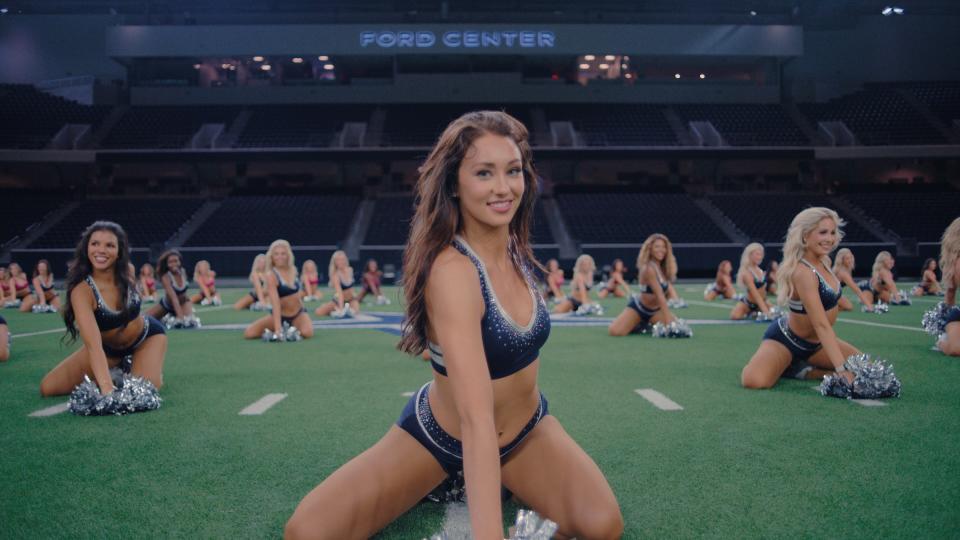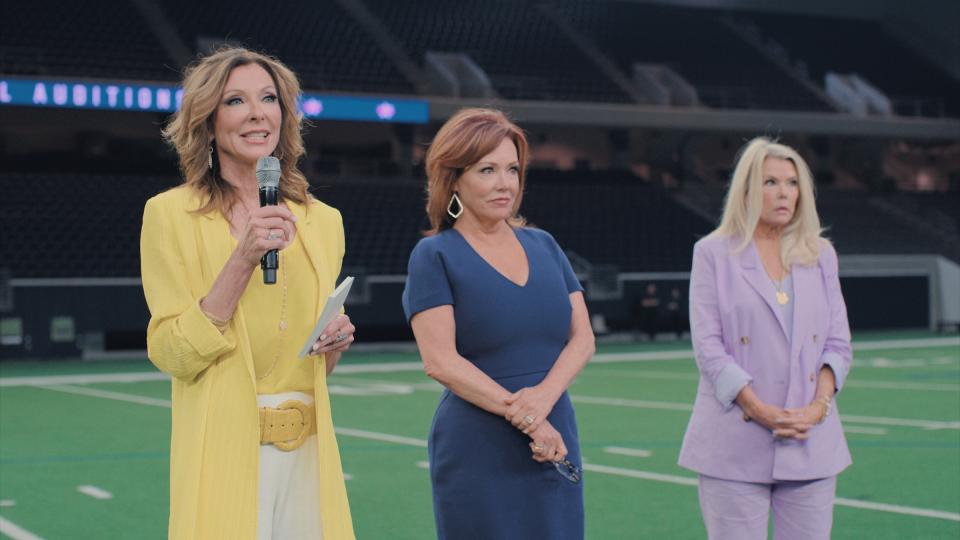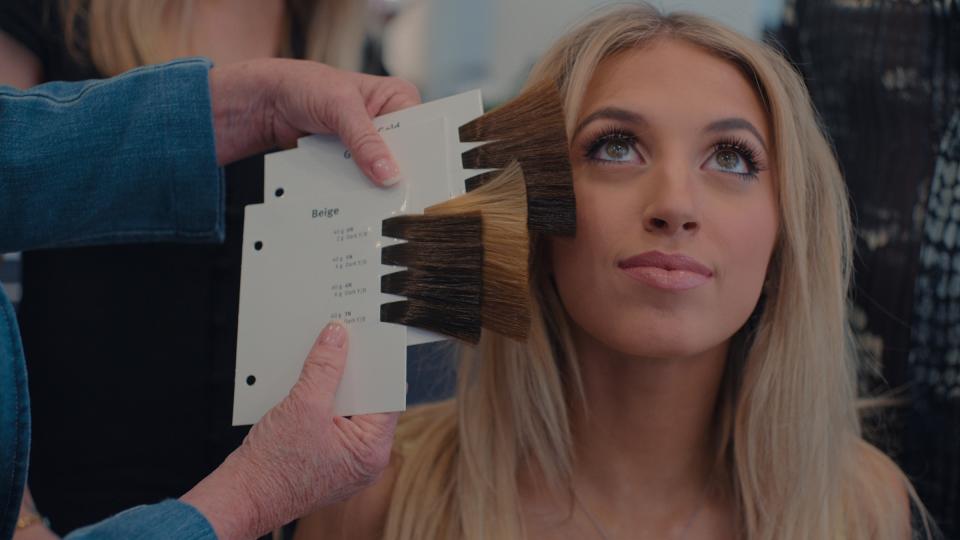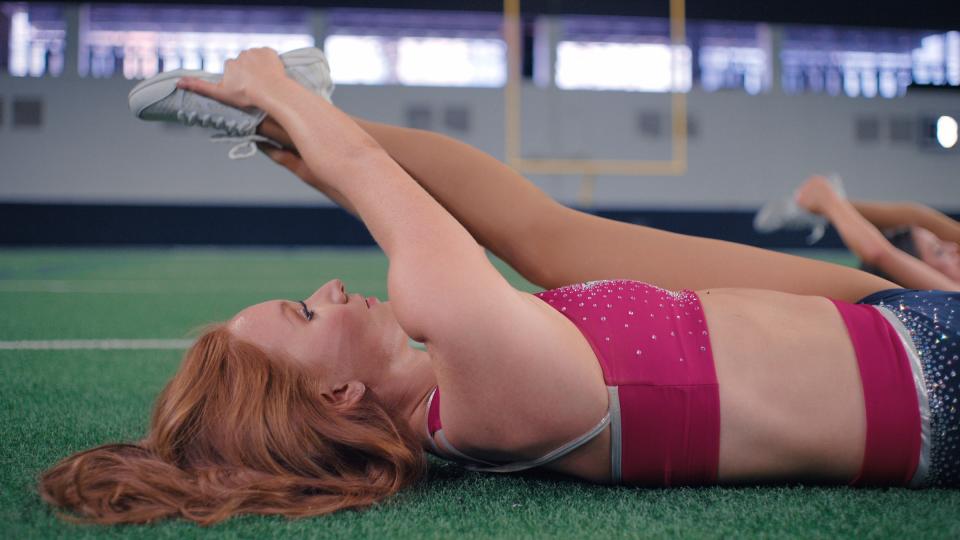Why Are the Dallas Cowboys Cheerleaders Paid So Little?
Though the Netflix series America’s Sweethearts: Dallas Cowboys Cheerleaders is filled with plenty of revelations about the organization, one of the most shocking is that despite the intense athletic demands and rigorous schedule of the elite team, many of the dancers also balance the work of being a Dallas Cowboys cheerleader with full-time jobs in order to make enough to get by. Since the series premiered, viewers have increasingly sounded off online about how low their salaries are considering the profitable organization they represent.
“The Dallas Cowboys owners justify paying their cheerleaders a paltry salary (equal to a "full-time Chick-fil-A worker") bc it is a privilege & the women are finding their purpose, passion & sisterhood,” wrote Amy Diehl, a gender bias researcher and the author of Glass Walls on X (formerly Twitter). “The football players make tens of millions per year.”
“It’s crazy to me that people worth billions of dollars don’t value the people that keep their brand afloat by paying them a livable wage and then have crazy demands and crazy schedules that you’re paying them pennies to do,” said a TikTok user who uses the handle @dani_bananni, “because obviously, the money is there.”
In recent years, pay equity has been a prominent issue for women athletes across a range of professional sports leagues. In the NFL, the past decade has seen a growing number of cheerleaders starting to speak out, following Lacy Thibodeaux-Fields, a former Oakland Raiderette, filing the first class action lawsuit against the NFL in 2014 for wage theft and gender discrimination. By 2020, the Guardian reported that 10 of the NFL’s 26 teams had been served lawsuits for compensation, wage theft, hostile work environments, and harassment.
Read more America’s Sweethearts Is a Surprisingly Infuriating Portrait of the Ultimate Pink-Collar Job
The economics of professional cheer

In the first episode of America’s Sweethearts, directed by Cheer and Last Chance U creator Greg Whiteley, fifth-year veteran Kelcey Wetterberg details her daily schedule, which involves working as a pediatric nurse from 7:30 a.m. to 4:30 p.m., before she goes to cheerleading practice, which sometimes runs as late as midnight. Other cheerleaders in the series also share that they have jobs working as florists and dance instructors. While Wetterberg says she considers cheerleading a part-time job, the time commitment and demands expected of the cheerleaders, both physical and emotional, are significant. They practice at least 20 hours weekly, in addition to working game days and other appearances during the 18-week NFL regular season, plus training camp and additional programming in the off-season and the possibility of the playoffs. In one episode, it’s revealed that the squad would be working 21 days straight, with no days off.
“A lot of us work full time jobs and then come to DCC at night, so it can be really exhausting,” Wetterberg says. “You give up a lot, but it’s five years of your life.”
Former Dallas Cowboy cheerleader Kat Puryear shares in the series that her salary as part of the team was equivalent to “a substitute teacher [salary]...like, Chick-fil-A worker that works full-time." This week on TikTok, Puryear gave more insight into the economics of being on the squad: “It’s a full-time commitment, but part-time pay,” she said. “It’s a lot of work.” Tina Kalina, the mother of squad member Victoria Kalina and herself a former DC cheerleader who danced for the team in the 80s, shares that she made $35 per game and “basically donated that back,” seeing the work as “more of a privilege.”
Read more: America’s Sweethearts Star Victoria Kalina on Cheerleading, Mental Health, and Her Future

According to a 2022 report by NBC Boston, the Dallas Cowboys Cheerleaders make about $500 per game and $15-20 per hour for practices, which comes out to roughly $75,000 per year. (A representative for the Dallas Cowboys did not respond to TIME’s request to comment or verify these figures.) While their wages are technically higher than the average NFL cheerleader’s, which ESPN reported in 2017 was just $75-$150 per game, the average salary for an NFL player is around $2 million (although many contracts far exceed that). Currently, the lowest paid Dallas Cowboys player makes $832,500 annually, while Cowboys quarterback Dak Prescott has a contract worth $160 million. Additionally, the Dallas Cowboys organization is valued at $9 billion (with Forbes estimating team owner Jerry Jones’ net worth at $14.1 billion), making it the most valuable sports organization in the world.
In the series, Charlotte Jones, the Dallas Cowboys executive vice president and Chief Brand Officer and the daughter of Jerry Jones, addresses the issue of the cheerleaders’ pay, suggesting that the cheerleaders are not motivated by money, but instead opportunity and a “passion for dance.” While Charlotte Jones’ salary is unknown, the Dallas Morning News reported that Jones’ ex-husband Shy Anderson testified that the former couple had a total income of about $1.34 billion during their 30-plus years of marriage.
“There’s a lot of cynicism around pay for NFL cheerleaders, and as it should be—they’re not paid a lot,” she says. “But the facts are they actually don’t come here for the money. They come here for something that’s actually bigger than that to them. They have a passion for dance. There are not a lot of opportunities in the field of dance to get to perform at an elite level. It is about being a part of something bigger than themselves. It is about a sisterhood that they were able to form, about relationships that they have for the rest of their life. They have a chance to feel like they are valued, that they are special and that they are making a difference. When the women come here, they find their passion and they find their purpose.”
Read more: Why the Gender Pay Gap Has Persisted for Two Decades
Dallas Cowboys Cheerleaders past issues with pay

America’s Sweethearts isn’t the first time that the issue of pay equity has come up for the Dallas Cowboys Cheerleaders. In 2018, former DC cheerleader Erica Wilkins sued the organization, claiming that there were times she made less than minimum wage while working as a cheerleader. In the suit, Wilkins claimed that she was paid less than the team’s mascot and that at the time, the cheerleaders paid for their own gym memberships and were not given access to the NFL’s gym. During Wilkins’ tenure, they were also expected to launder their own uniforms and to maintain the ”DCC look” aesthetically. (In a 2018 interview with the New York Post, Wilkins says that to maintain her look, she needed regular, bi-weekly spray tans and monthly upkeep on hair extensions and highlights, most of which she paid for out of pocket.)
Wilkins’ case was settled in 2019 and resulted in increasing the hourly wage from $8 to $12 and the game day rate from $200 to $400 for the cheerleaders. Despite those gains, it highlighted just how little the cheerleaders, despite their highly skilled athleticism, make in relation to what the organization earns off their talents and their images—a number which is difficult to directly quantify. And while a representative for the Dallas Cowboys told Sports Illustrated last week that the team currently “pays for games, practices and appearances and covers the cost of uniforms, some meals, health club memberships and salon services,” an anonymous former cheerleader told the Huffington Post that unlike the football players, they cannot use their titles to sign sponsorship deals or social media influencer agencies to supplement their incomes. On TikTok, Puryear confirmed in a comment that although images of the cheerleaders are used to sell swimsuit calendars to fund the cheerleading program, the cheerleaders themselves don’t financially benefit from the use of their likenesses.
“It’s kind of a running joke for the girls on the team: The guys on the practice squad, who don’t even touch the field half of the time, getting 80 grand more than we do a year,” the anonymous cheerleader told the Huffington Post. “And I’m at every single game, dancing my ass off, and every other appearance…it’s unfortunate that with how much they pretend or say that we are important and the face of the organization, the way they treat us and pay us does not come near to equal that.”
Costs that go beyond the financial

The salaries of the Dallas Cowboys Cheerleaders have bearing on more than just their ability to cover the costs of living. The true cost of physically performing at this level is different than it is for many other types of labor when you factor in the potential for long-term damage to their bodies and the inevitable health care costs that accompany injury and recovery. America’s Sweethearts devotes the better part of an entire episode to the cheerleaders learning how to perform jump splits, an impressive but painful acrobatic feat that’s become the Dallas Cowboys Cheerleaders’ signature move—and the major stressor on many of their bodies.
In the series, former cheerleader Caroline Sundvold details how she postponed a reconstructive hip surgery to finish out her final season; after retiring, she got the surgery and needed an additional procedure done on her foot. Another former cheerleader, Michele Sharp, who now works as an admin for the organization, shares that she’s had 12 orthopedic surgeries in the last six years, while Puryear revealed that she tore both her hips during her time as a cheerleader. While Sundvold talks about her time with the organization as “literally the best job you could have,” for Wilkins, who retired after finishing her final year with a neck and shoulder injury, the price of being a Dallas Cowboy cheerleader was too much given what she was being paid.
“Yes, it is prestigious,” Wilkins said in a 2018 interview with the New York Post. “But at the end of the day, prestige doesn’t pay my rent. I can’t walk down to my leasing office and hand them my uniform for the month.”
Write to Cady Lang at cady.lang@timemagazine.com.

 Yahoo News
Yahoo News 
